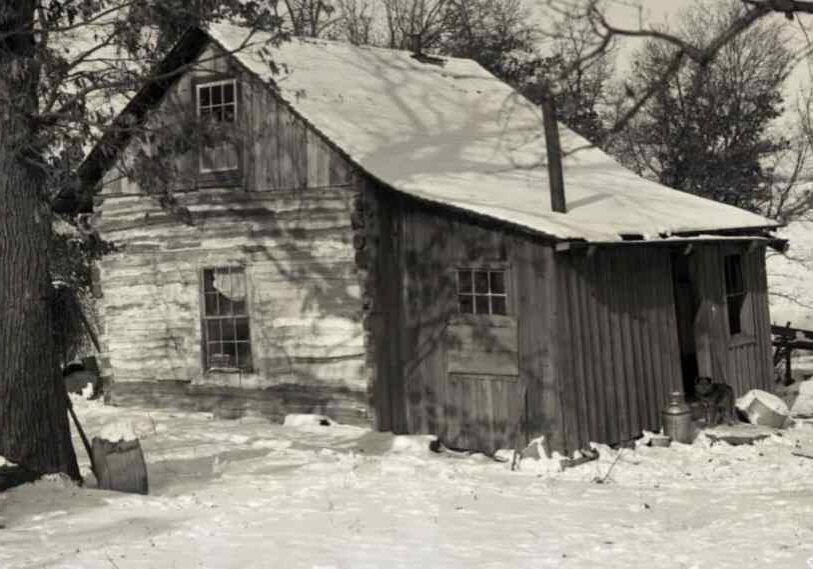Dubuque-St. Paul Territorial Road Opened Up Area to White Settlement

FILLMORE COUNTY — A friend of mine, who lives near Forestville State Park, doesn’t realize that he drives on the “stage road” when he travels north to Rochester via Carimona, Fillmore Village, Pleasant Grove, and Simpson, before landing in the city. This circuitous route, which follows several county roads in Fillmore and Olmsted counties, originated nearly 170 years ago as part of the Dubuque–St. Paul Stage Trail. Built in 1854 to open the interior of Minnesota Territory, the trail connected emerging communities in Minnesota with those in Iowa.
“Every 15 miles there was a “swing” or “home” station,” Sara Sturgis, former executive director of the Fillmore County Historical Society, explained. “And many of those stations would later become the towns and cities we call home today.”
According to Sturgis, a swing station was a wayside in the road where horses were changed and riders stretched their legs. A home station ranged from an inn, tavern, or farmhouse, where passengers could get a meal and spend the night, like the Dayton House in Big Springs near Harmony. Many home stations also served as post offices and ticketing venues. In Carimona there was the Frontier Hotel and the Curtis Hotel in Pleasant Grove in Olmsted County serving overnight guests.
The staging industry in Minnesota
Stagecoaches were a regular mode of transportation during the white settlement period in America, as immigrants from Europe brought the industry to the new world. By the 1700s there were several stagecoach routes in the East. And as roads were built and the boundaries of the United States expanded westward, the “staging industry” followed.
The population of the Minnesota Territory at the 1850 census was approximately 6,000 white settlers, with about one third of them residing in the St. Paul–St. Anthony–Stillwater area. The rest were scattered across the countryside, mainly around river systems that would allow for ease of transportation. Minnesota had a very primitive road system at the time, consisting mainly of ruts across the landscape used by Native Americans, traders, and early settlers.
Westward expansion across the continent began in earnest in the late 1840s. The Treaty of Traverse de Sioux opened up large tracts of land between the Minnesota and Mississippi Rivers in southeast Minnesota and northeast Iowa. And the influx of Norwegian, Swedish, and German immigrants coming into the Territory put pressure on the federal government to open up the interior for settlement. These new Americans were looking for land to farm and needed a way to get there.
The Territorial Legislature authorized the building of roads in settled areas, which led to the first “staging” route in 1849. A stagecoach service began between St. Paul and St. Anthony, soon followed by a route from St. Paul to Galena, Illinois through Prairie du Chien, Wisconsin. The following year, Territorial Governor Henry Sibley went to Washington to lobby for road funding. In 1850, Congress approved the construction of four “military” roads by the War Department. The federal government also incentivized the creation of stage routes by offering mail contracts to companies willing to carry passengers, mail, and supplies.
In 1854, the Territorial Legislature authorized the building of the Dubuque–St. Paul stage trail. Pressure from businessmen in both states lobbied for the creation of the trail. Minnesota hoped that the new road would aid settlement to fertile internal lands. The trail from Iowa came through Burr Oak, near the state line, before entering Minnesota in Harmony Township in Fillmore County and then extending north to Olmsted through Pleasant Grove and Rochester. The road continued on through Cannon Falls in Goodhue County and into Dakota County before reaching St. Paul.
Expansion of the early road system
Martin Walker, who had previously managed routes in several states, was the low bidder to bring the mail on the Dubuque–St. Paul run. Walker employed a four-horse coach claiming they could make the more than 200-mile trip in four days. He created several changing stations along the way. By 1853, Walker was already running an extensive stage service through Fillmore County.
The diary of Lepha Ann Carter recalls coming into Fillmore Village on February 18, 1853.
Pleasant but colder than yesterday. We have 18 miles to go and a bad road—one house 12 miles from here, a little hewn log hut, which kept a limited stock of dried meats, bacon, crackers and provisions, and a stock of whisky to cheer the weary traveler.
With the opening of the Dubuque–St. Paul trail, enterprising companies created their own spur lines. A stage route from Winona went to Carimona via Chatfield, linking the river town with inland travel. This segment was later extended from Carimona to Austin, and then to Albert Lea. Additional lines went from Winona to Red Wing and Red Wing to Zumbrota and from Rochester to St. Peter. Similar segments were being created throughout greater Minnesota at the same time.

The Dayton House in Big Springs near Harmony was a home station providing overnight accommodation on the Dubuque–St. Paul Territorial Road. (Photo courtesy of Fillmore County Historical Society)
A 1961 article in Minnesota Highways recalls the route 14-year old Thomas Flynn of Forestville took to haul his wheat to Winona. With many men serving in the Civil War, young men like Flynn had to do a man’s work. Using oxen, the round trip was approximately 100 miles and took a week to 10 days.
The route, starting at Forestville, which at the time had a population of 600, was to Carimona, where the Dubuque–St. Paul Territorial Road passed. The route from Carimona led northward to Fillmore where it was necessary to ford the Middle Branch of the Root River. The Dubuque to St. Paul road was followed northward to Chatfield where it intersected the Winona road which passed through Troy, Fremont, Wyattville, Wilson, and then into Winona.
While the opening of roads increased travel opportunities, service was often poor and weather could play havoc with conditions. There were many complaints about Walker’s company. A newspaper account noted in disgust that it took Walker’s coaches 14 days to deliver the mail to St. Paul. And a traveler on Walker’s coach wrote in a Carimona hotel register that “Walker is running a hel (sic) of a line through here.” Walker did nothing to improve his service.
Competition came in 1856 when James Burbank, who created the St. Paul to Galena trail, started running coaches on the Dubuque–St. Paul trail. It soon became the preferred service.
“Walker was a wildcatter. A fly-by-night opportunist looking for a quick buck and often neglected service,” Sturgis said. “This eventually led to Burbank, who had a much better reputation, usurping Walker as the carrier of choice.”
The ever-growing road system in Minnesota led to a population boom. By the time Minnesota gained statehood in 1858, the white population had grown to more than 120,000 inhabitants, a 20-fold increase in less than 10 years. The 1860 census showed Fillmore County with 13,542 settlers, and at one time it was the second largest county in Minnesota with more than 20,000 people. It would peak in 1895 at 28,599 people.
The staging era in Minnesota lasted from 1849 to 1880, with more than 1,000 miles of road developed. By 1880, the railroad had supplanted the stagecoach as the preferred means of travel. But several stagecoach companies continued in business shuttling travelers from towns to rail depots, similar to what airport vans do today. In addition to staging routes, farm-to-market roads were built to towns on the Mississippi where farmer’s grain could be carried to market.
The stagecoach played a critical role in opening up southeast Minnesota to white settlement, laying the foundation for railroads, and eventually for motorized travel.
“The Dubuque–St. Paul trail is an important part of our history,” Sturgis said. “Most people don’t realize the role the Territorial Road played in transporting European immigrants to land they would cultivate and live on. Towns grew up along the trail that still exist today.”
Sources:






